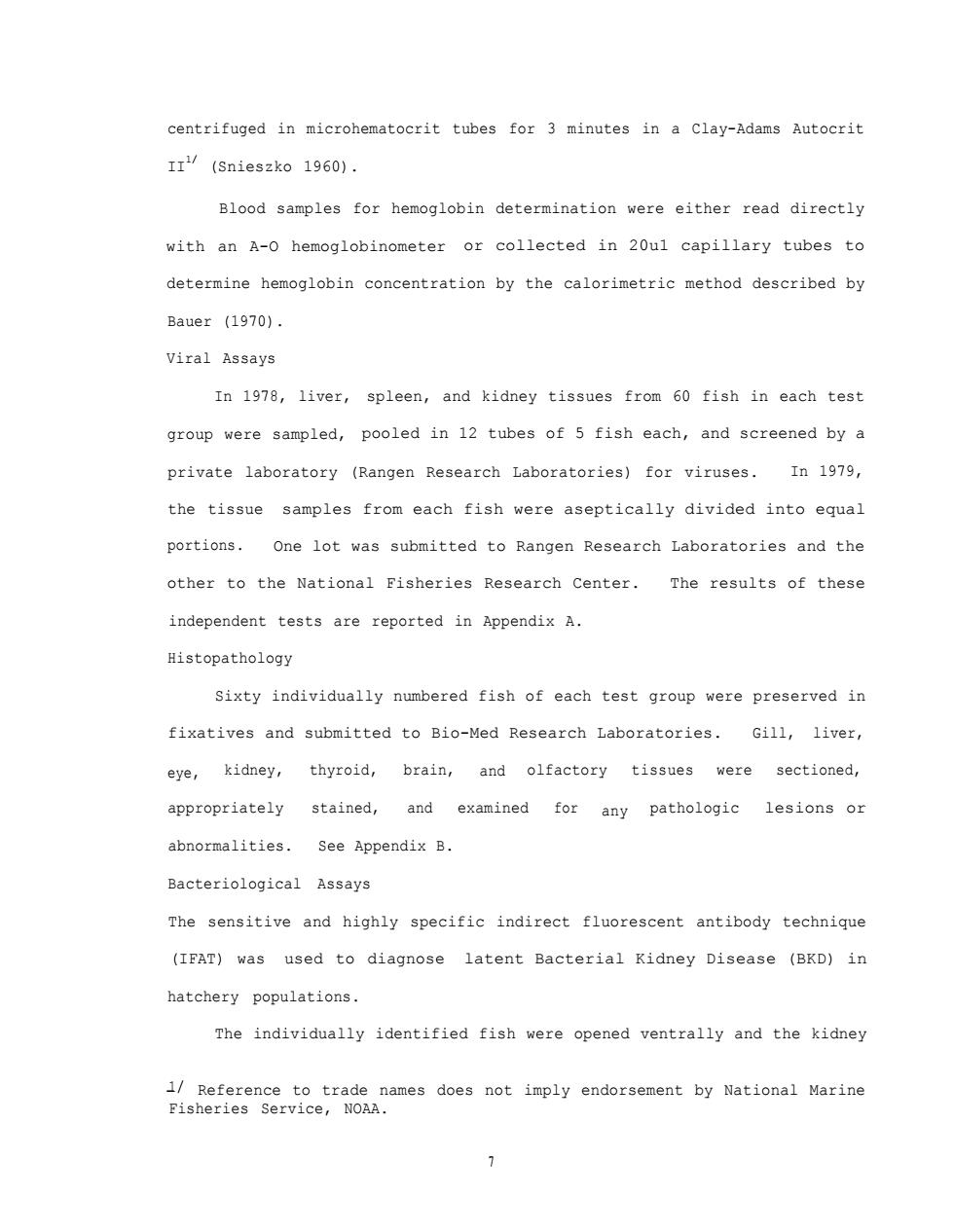正在加载图片...

centrifuged in microhematocrit tubes for 3 minutes in a clay-Adams Autocrit II/(Snieszko 1960). Blood samples for hemoglobin determination were either read directly with an A-0 hemoglobinometer or collected in 20ul capillary tubes to determine hemoglobin concentration by the calorimetric method described by Bauer (1970) Viral Assays In 1978,liver,spleen,and kidney tissues from 60 fish in each test group were sampled,pooled in 12 tubes of 5 fish each,and screened by a private laboratory (Rangen Research Laboratories)for viruses.In 1979, the tissue samples from each fish were aseptically divided into equal portions.One lot was submitted to Rangen Research Laboratories and the other to the National Fisheries Research Center.The results of these independent tests are reported in Appendix A. Histopathology sixty individually numbered fish of each test group were preserved in fixatives and submitted to Bio-Med Research Laboratories.Gill,liver, eye,kidney,thyroid,brain,and olfactory tissues were sectioned, appropriately stained,and examined for any pathologic lesions or abnormalities.See Appendix B. Bacteriological Assays The sensitive and highly specific indirect fluorescent antibody technique (IFAT)was used to diagnose latent Bacterial Kidney Disease (BKD)in hatchery populations. The individually identified fish were opened ventrally and the kidney 1/Reference to trade names does not imply endorsement by National Marine Fisheries Service,NOAA. centrifuged in microhematocrit tubes for 3 minutes in a Clay-Adams Autocrit II1/ (Snieszko 1960). Blood samples for hemoglobin determination were either read directly with an A-O hemoglobinometer or collected in 20u1 capillary tubes to determine hemoglobin concentration by the calorimetric method described by Bauer (1970). Viral Assays In 1978, liver, spleen, and kidney tissues from 60 fish in each test group were sampled, pooled in 12 tubes of 5 fish each, and screened by a private laboratory (Rangen Research Laboratories) for viruses. In 1979, the tissue samples from each fish were aseptically divided into equal portions. One lot was submitted to Rangen Research Laboratories and the other to the National Fisheries Research Center. The results of these independent tests are reported in Appendix A. Histopathology Sixty individually numbered fish of each test group were preserved in fixatives and submitted to Bio-Med Research Laboratories. Gill, liver, eye, kidney, thyroid, brain, and olfactory tissues were sectioned, appropriately stained, and examined for any pathologic lesions or abnormalities. See Appendix B. Bacteriological Assays The sensitive and highly specific indirect fluorescent antibody technique (IFAT) was used to diagnose latent Bacterial Kidney Disease (BKD) in hatchery populations. The individually identified fish were opened ventrally and the kidney -1/ Reference to trade names does not imply endorsement by National Marine Fisheries Service, NOAA. 7